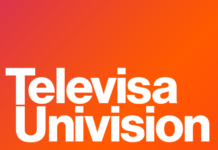With deployments of ATSC 3.0-enabled NEXTGEN TV host stations ramping up, the technical team behind the Phoenix Model Market project is offering a series of seven free webinars every other Wednesday throughout this summer to television broadcasters.
The course series began June 3 and continues every other week through the end of August.
Registration in advance is required, although the sessions are being presented for free. Each session lasts one hour.
“This series of webinars will provide instruction to help guide station and technology management personnel in converting local markets to NEXTGEN TV,” Pearl TV engineer and chief instructor Dave Folsom said. “We are asking participants to please read the Host Station Manual in advance, which was just updated and is in its seventh edition. The courses are intended for station engineers and TV technology managers who wish to obtain a better understanding of the ATSC 3.0 standard that powers NEXTGEN TV. Participants will be guided in the knowledge of what it takes to create and share services on a NEXTGEN TV Host Station.”
The Wednesday webinars will provide a basic explanation of content and security protection, broadcaster application and framework, service profiles, and equipment requirements.
June 17: “ATSC 3.0 Layered Structure”
Register here.
This session will focus on the OSI 7-layered approach taken in the basic design of ATSC-3 and why it is the most useful model in the creation of NEXTGEN TV. Although the standard is an emission standard, there is more going on within that allows for the flexibility and agility of the standard that makes it adaptable. Multiple services can be broadcast at the same with varying levels of robustness, for example. We will also cover the extensibility of the standard which benefits from this layered design approach.
Speaker: Dave Folsom
July 1: “Encoding and Packaging”
Register here.
HEVC (H.265 Main 10) has been designated for video encoding, and AC-4 for Audio encoding in North America. We will look in this webinar at the video encoding, High Dynamic Range (HDR) and Wide Color Gamut as well as the various options of scan size, type and frame rate. In audio, we will discuss the highlights of what is available as basic as well as unique features in AC-4 and why they are an asset to the new standard. The important role of the DASH packager in the encoder will also be discussed.
Speaker: Dave Folsom
July 15: “Encapsulation, Signaling & Gateway”
Register here.
In this webinar we will learn about the other major building blocks of the broadcast equipment required to create the NEXTGEN TV signal to be delivered to the exciter. The key to all of this is wrapping the component services in the various layers and providing the signaling that is required by the receiver to find the services and rebuild them for proper presentation in the receiver.
Speaker: Dave Folsom
July 29: “HELD and NRT, Application & Framework”
Register here.
The HELD or HTML Entry pages Location Description is a signaling table critical for the proper loading and execution of the Framework and Broadcaster Application environment. We will discuss the role of Non-Real Time (NRT) data delivery as well as the capabilities and features of the Framework and Broadcaster Application.
Speakers: Dave Folsom, Pete Van Peenen
August 12: “Content Security and Service Protection”
Register here.
Content Security and Service Protection is at the very heart of the NextGen TV services. Content Security ensures that the rights of the original content owners are preserved by requiring the receiver to be enabled to receive the service while also preventing unauthorized duplication. This prevents bad actors from copying the content and redistributing it without proper authority. Service Protection is a means by which the receiver checks the NEXTGEN TV signaling and NRT data to ensure it is authentic and actually is being transmitted by the broadcaster without manipulation by a “man-in-the-middle.”
Speaker: Pete Van Peenen
August 26: Host Station Configuration and Service Profiles
Register here.
This webinar wraps up this series by covering the various available configurations and trade-offs that can be made in the activation of a NEXTGEN TV host or individual station. The ideal is to operate at compromise setting that delivers the desired signal coverage with sufficient payload bandwidth. However there likely will be a cost in the form the payload bandwidth and channel bandwidth required. This discussion dovetails with the business issues associated with sharing in a host station and later when the services are fully deployed. A full understanding of these capabilities and trade-offs will be important to understand.
Speakers: Dave Folsom, Pete Van Peenen





